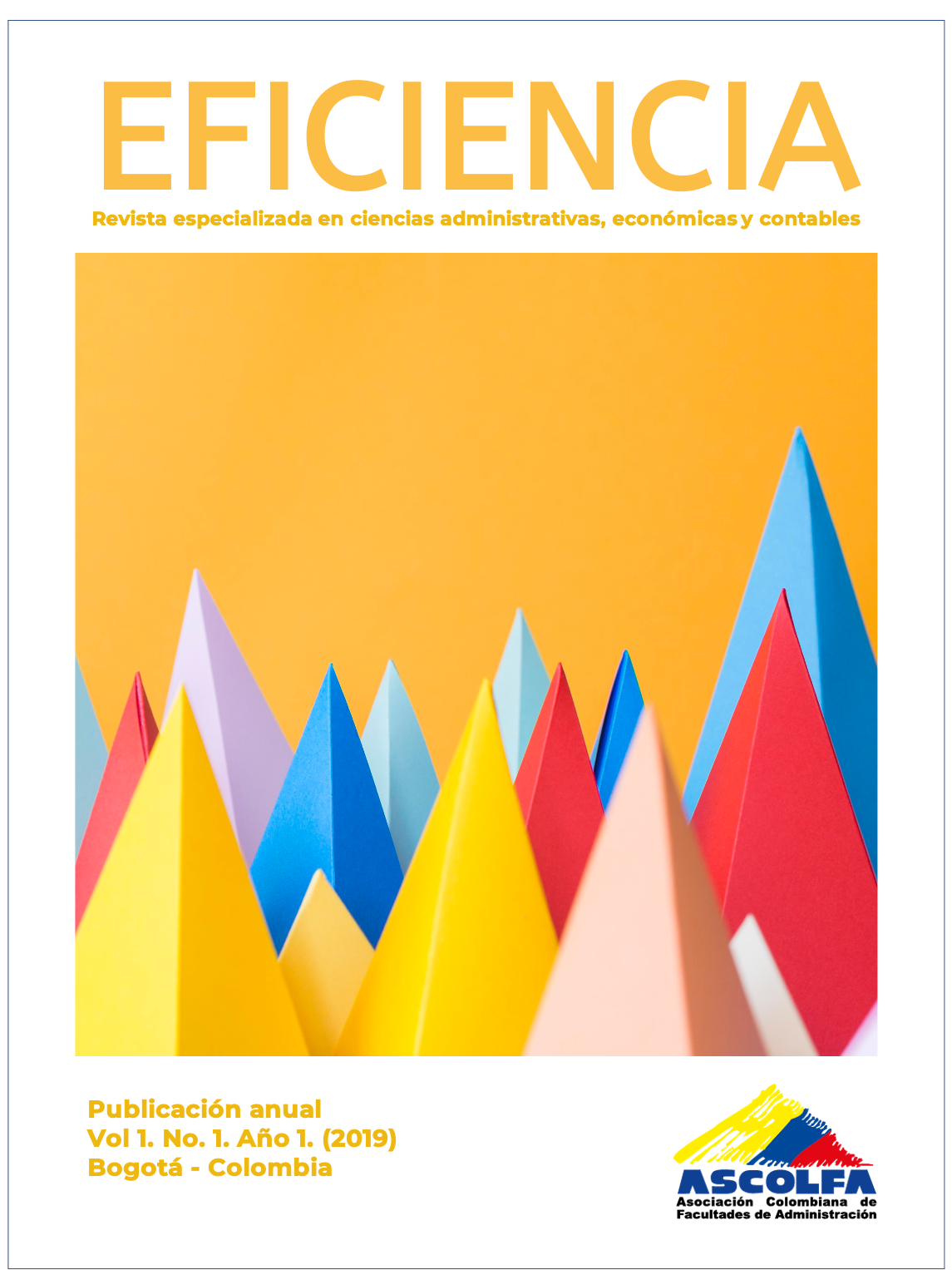ANÁLISIS BIBLIOMÉTRICO DE PUBLICACIONES SOBRE RETENCIÓN DEL PERSONAL Y SU RELACIÓN CON GESTIÓN DEL CONOCIMIENTO
Contenido principal del artículo
Resumen
Este trabajo tiene como objetivo identificar la relación existente entre retención del personal y gestión del conocimiento expuestos en la literatura especializada. Para su desarrollo, se realiza un análisis bibliométrico enfocado en examinar artículos científicos obtenidos de las bases de datos Scopus y Web of Science. Este ejercicio permite obtener diversos indicadores que dan cuenta del estado de la investigación, ahondando en los enfoques teóricos, abordajes metodológicos, tendencias y hallazgos de la literatura consultada, para realizar un análisis de los artículos que arroje un panorama descriptivo e interpretativo de la relación existente entre retención del personal y gestión del conocimiento.
##plugins.themes.bootstrap3.displayStats.downloads##
Detalles del artículo
Número
Sección

Esta obra está bajo una licencia internacional Creative Commons Atribución-NoComercial-SinDerivadas 4.0.
Cómo citar
Referencias
Alavi, M.; Leider, D. (1999), Knowledge Management and knowledge Management Systems: Conceptual Foundations and Research Issues, working papers, INSEAD R&D 99/34/TM.
Allen TD. (2001). Family-Supportive Work Environments: The Role of Organizational Armstrong, M., & Taylor, S. (2014). Armstrong's handbook of human resource management practice. Kogan Page Publishers.
Avendaño, V., & Flores, M. (2016). Modelos teóricos de gestión del conocimiento: descriptores, conceptualizaciones y enfoques. Entreciencias: diálogos en la Sociedad del Conocimiento, 4(10), 201-227.
Beazley, H., Boenisch, J. and Harden, D. (2002), Knowledge Continuity, John Wiley & Sons, Hoboken, NJ.
Borgohain, S., B. (2010). Key factors and challenges for retention of employees in a public sector enterprize. A case Study in Power Grid Corporation of India Limited, 4(3), 64- 71.
Conner, J. (2000). Developing the global leaders of tomorrow. The International Journal Human Resource Management, 39(2), 147-157.
Gentry W A, Kuhnert K W, Mondore S P and Page E. (2007), The Influence of Supervisory- Support Climate and Unemployment Rate on Part-Time Employee Retention, Journal of
Guma, P. V. (2011). Organisational factors impacting on employee retention (Master of Business Administration Thesis). Nelson Mandela Metropolitan University
Huang, T. C., Lawler, J., & Lei, C. Y. (2007). The effects of quality of work life on commitment and turnover intention. Social Behavior and Personality: An International Journal, 35, 735– 750.
Kreisman, B. J. (2002). Insight in to employee motivation, commitment and retention. Business Training Experts, 4(8), 27-41
Kumar, N., & Anwarul, I. (2015). Knowledge retention and transfer: how libraries manage employees leaving and joining, VINE, 45(2), 150-171.
Malhotra, Y. (1997). Knowledge Management in Inquiring Organizations, En: Proceedings of 3rd. Americas Conference on Information Systems (Philosophy of Information Systems Mini-track), Indianapolis, IN, 15-17 de Agosto. Management Development, 26(10), 1005-1022.
Millar, C., Lockett, M., & Mahon, J. (2016). Guest editorial: Knowledge intensive organisations: on the frontiers of knowledge management, Journal of Knowledge Management, 20(5), 845-857.
Nonaka, I. and Takeuchi, H. (1995), The Knowledge Creating Company: How Japanese Companies Create the Dynamics of Innovation, Oxford University, New York, NY. Organization Science, 11(5), 538-550.
Ortlieb R & Sieben B (2012), How to Safeguard Critical Resources of Professional and Managerial Staff: Exploration of a Taxonomy of Resource Retention Strategies, International Journal of Human Resource Management, 23(8), 1688-1704.
Osterloh, M., & Frey, B.S. (2000). Motivation, knowledge transfer, and organizational forms.
Paille P (2012). Organisational Citizenship Behaviour and Employee Retention: How Important are Turnover Cognitions?, International Journal of Human Resource Management, 24(4), 768- 790.
Peluffo, M., y Catalán, E. (2002). Introducción a la gestión del conocimiento y su aplicación al sector público. Serie Manuales CEPAL. Santiago de Chile: Instituto Latinoamericano y del Caribe de Planificación Económica y Social – ILPES. Perceptions. Journal of Vocational Behavior. 58(3):414-435.
Pizarro, N. A. B. (2019). Using Research projects in the classroom to improve Engineering education. 48th Frontiers in Education Conference, FIE 2018, 2018-October. https://doi.org/10.1109/FIE.2018.8659057
Polanyi, M. (1966). The message of the Hungarian revolution. The American Scholar, 661-676.
Price J L (2001). Reflections on the Determinants of Voluntary Turnover, International Journal of Manpower, 22(7), 600-624.
Ríos de Deus, M. P., & Díez-Ríos, N. (2018). Políticas de mejora continua. Garantía de la calidad en centros de educación superior. Revista Panorama, 12(23), 19-35. doi:http://dx.doi.org/10.15765/pnrm.v12i23.1198
Rueda-Clausen, C.; Villa-Roel, C., Pinzón, C. (2005). Indicadores bibliométricos: origen, apliación, contradicción y nuevas propuestas. MedUNAB, 8(1), 29-36.
Thelwall, M. (2009). Bibliometrics and Citation Analysis: From the Science Citation Index to Cybermetrics. Library & Information Science Research, 31(4), 268-269.
Tzafrir S S, Harel G H, Baruch Y and Dolan S L (2004), The Consequences of Emerging HRM Practices for Employees’ Trust in Their Managers, Personnel Review, 33(6), 628-657.

